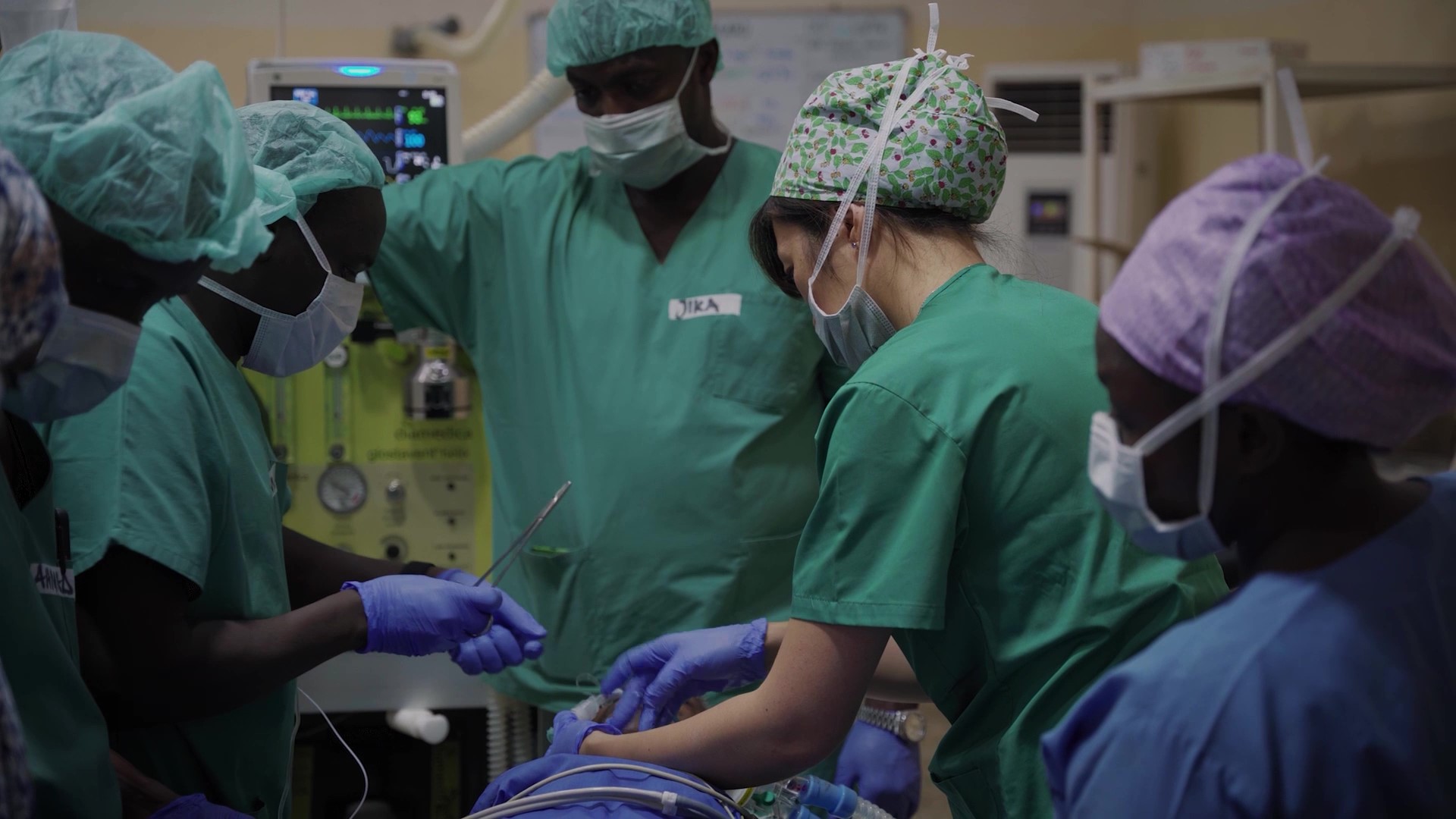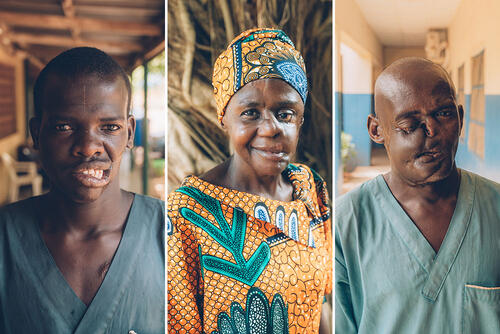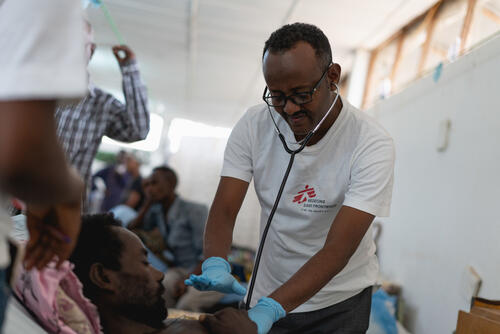Noma
Noma is a facial gangrene infection that affects children in particular. Its name comes from the Greek word “nomē”, meaning "to devour".
The disease starts in the mouth and eats away the facial tissue, leaving survivors with severe disfigurements. These can cause life-threatening impairments and crippling social stigma.
Noma mostly affects children under six years old from poor and remote communities in Africa.
The World Health Organization (WHO) estimates that around 140,000 new noma cases emerge every year, but this data has not been updated since 1998.
An important step towards eradicating the disease is the inclusion of noma on the WHO's list of neglected tropical diseases (NTDs) which opens up increased funding and resources.
In late 2023, after several years of campaigning by Médecins Sans Frontières / Doctors Without Borders (MSF) and other organisations, the WHO announced that noma would be officially recognised as an NTD.
Where noma is detected at an early stage, its progression can be rapidly halted, through basic hygiene, antibiotics and nutritional rehabilitation. But without treatment, noma is fatal in 90 percent of cases.
What is MSF doing to treat noma?
MSF supports the world's only dedicated noma hospital in northwest Nigeria. Our innovative programme at Sokoto Children's Hospital, run in collaboration with the Ministry of Health, focuses on outreach, education and surgery. In 2023, our surgical team carried out almost 200 specialist procedures.
Noma: Key facts
90%
PEOPLE WITH NOMA WHO DIE WITHIN TWO WEEKS WITHOUT TREATMENT
140,000
ESTIMATED NUMBER OF CHILDREN AFFECTED EACH YEAR
2 WEEKS
AMOUNT OF TIME RECOVERY TAKES WITH TREATMENT
What causes noma?
This devastating disease is poorly understood.
There is no one determined cause for the disease. Multiple factors are thought to play their part, and we are investigating this as part of our noma project in Sokoto.
What is clear is that it's a disease associated with extreme poverty and malnutrition, affecting families living with poor access to sanitation and oral hygiene.
Current or recent illness can rapidly progress the onset of noma, including HIV, malaria, malnutrition, measles, or respiratory diseases.
Noma was once reported globally, including in Europe and the United States. Cases appeared in prisoners of Nazi concentration camps during World War Two.
As hygienic conditions improve, noma cases tend to decrease. It is now much less prevalent, although it is still reported in countries including Nigeria, Sudan and Democratic Republic of Congo.
What are the symptoms of noma?
Noma begins as a severe gum infection (gingivitis), leading to painful lesions (ulcers) in and around the mouth.
It progresses into a necrotising infection that kills soft tissue. As it spreads, noma ravages the face, lips, and chin, leaving survivors with extensive scarring.
Depending on the stage or severity of infection, disfigurements can vary. Many patients will lose significant areas of their face, leaving the bone underneath exposed.
Some patients experience trismus (also known as “lockjaw”) and are unable to speak or chew, leading to malnutrition.
Other symptoms include fever, drainage and loss of teeth.
Surgery for noma
Though noma itself is relatively easy to treat, patients are still left with extensive disfigurements which can affect their physical and mental health.
In our noma project in Sokoto, we send highly specialised surgeons to the hospital to operate on patients. This happens four times per year, consisting of one plastic surgeon and one maxillofacial surgeon.
Plastic surgeons are responsible for the reconstruction of soft tissue, whilst maxillofacial surgeons deal with jaw work. Both are specialised in refiguring facial defects.
Multiple operations are needed to treat noma disfigurements, making recovery a long, gradual process. Some patients will need up to three surgeries spanning the course of several years.
Stigma
Noma patients experience high levels of stigma within their communities. They are often considered cursed, and face exclusion or abandonment as a result. Parents of children infected with noma sometimes stop feeding them altogether.
In our noma project in Sokoto, we provide psychosocial care for our patients, and help to rebuild connections between parents and children.
We also provide skills-based activities for adult noma patients, who have grown up knowing only the stigma surrounding their condition.
We run education and community outreach programmes, seeking to reach patients unaware of our services and to improve public understanding.
Rebuilding lives
Noma is a sad and horrific disease. But after completing their course of surgeries and counselling, we see our patients, both children and adults, find a restored dignity. People are once again able to re-integrate into society.
We see some children able to return to school, some adults finding jobs, and communities and families welcoming back their loved ones.
Noma: News and stories



